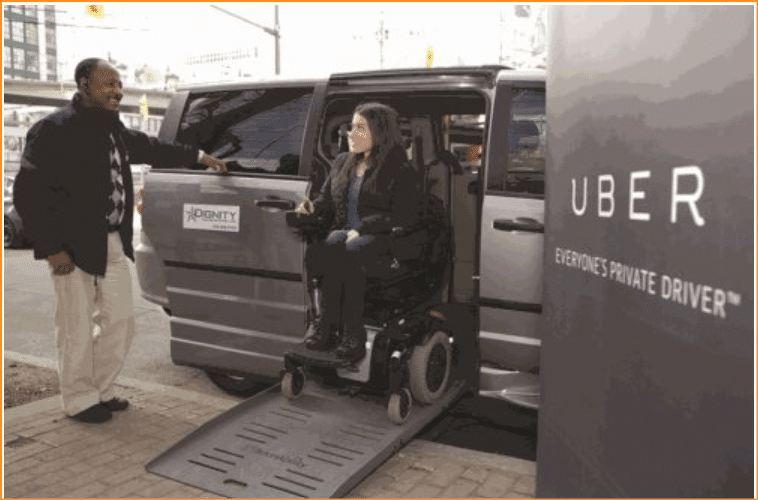In the age of smart phones, the lines between the technology in your hand and real-world practicality have been steadily blurring during the past several years. You can map driving directions, research businesses to find ratings and reviews, and now, you can press a button and have a car pick you up.
This latest trend is called “ride sharing” and the chances are good that you or someone you know has used this kind of service before. Uber and Lyft are the two biggest players in the ride-sharing game and they can be found in cities across the country. You simply download the app, input some quick information, and someone promptly shows up to take you to your destination. In order to cater to those with accessibility challenges, both Uber and Lyft have implemented special services for the disabled community.
In select cities, Uber has launched a program called uberWAV, which employs wheelchair accessible vehicles. According to Uber’s website, this program is “designed specifically to improve efficiency, ease, and reliability for riders with ambulatory disabilities.” The program has been praised by the Open Doors Organization, which
specializes in travel and tourism for the disabled. Drivers in the uberWAV programs will be aided by uberASSIST, which is “a voluntary suite of additional informational materials offered to driver-partners on how to best assist riders into vehicles and accommodate folding wheelchairs, walkers and scooters.”
Lyft operates a similar platform. From their app, you can enable Access Mode. According to Lyft’s website, when Access Mode is enabled, “vehicles that are specially outfitted to accommodate wheelchairs will be dispatched in lieu of a standard Lyft vehicle.” Lyft’s Access Mode is not available in all markets, but even if they can’t help you themselves, they will try to find you some help. “In markets where those vehicles are not available, information regarding local accessibility transport services will be sent directly to the passenger via text message when the ride is requested.”
Both uberWAV and Lyft’s Access Mode are still in the early stages of expansions, so both services currently only serve a small portion of the country. But, the fact that the two biggest ride-sharing platforms are making their services available to the disabled community shows that they are committed to getting an excellent tool to an underserved population.
Article source: MSFocus



